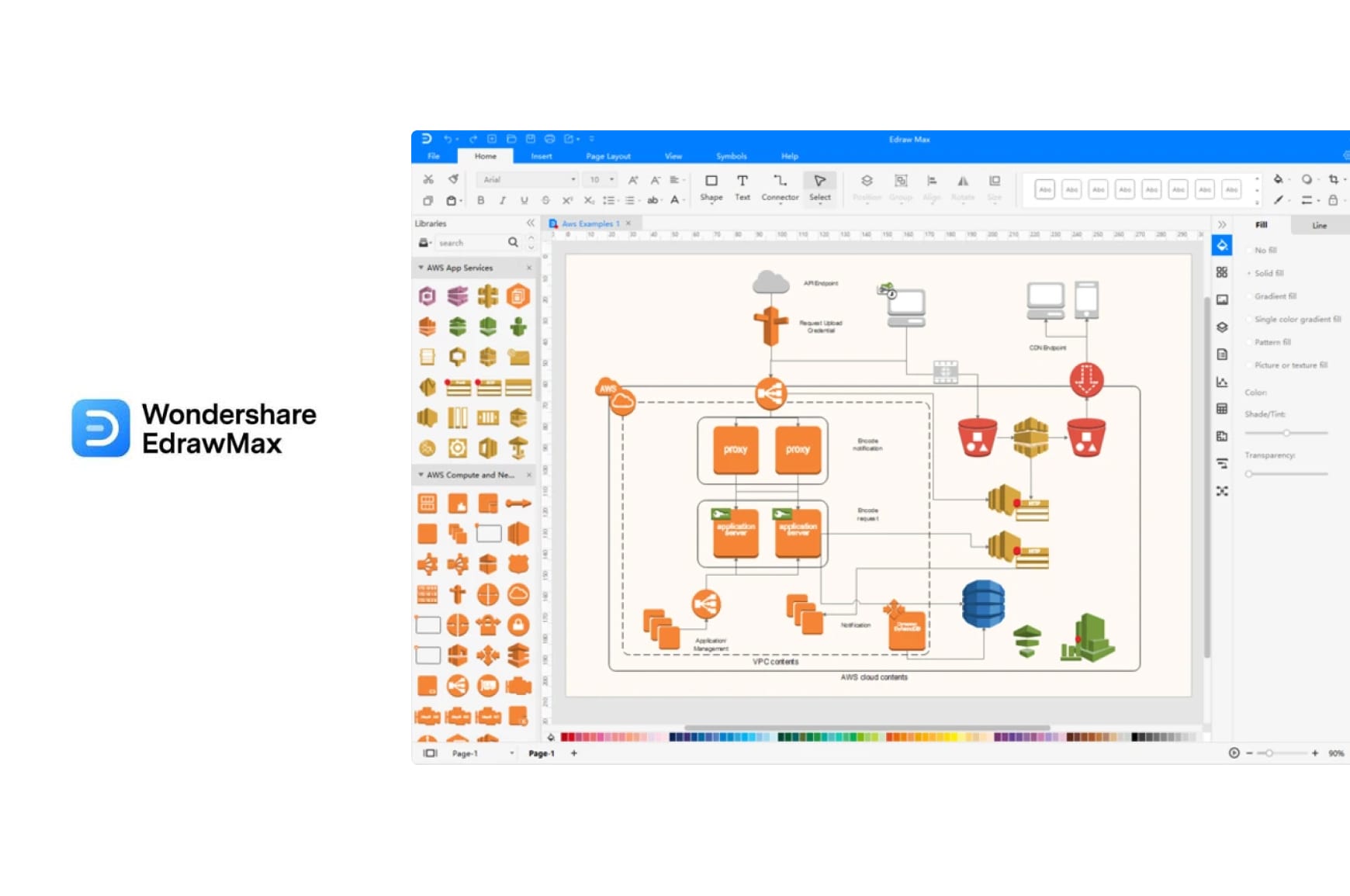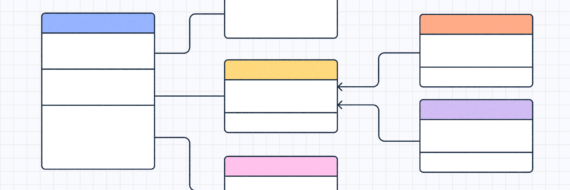Are broken workflows quietly costing your team time, money, and momentum?
If your processes feel clunky or your team keeps hitting the same roadblocks, it might be time for a smarter solution. Process mapping tools help you visualize every step, spot inefficiencies and cut the clutter. From business operations and value stream mapping to UX planning and customer journeys, the right tool gives you a clear view — and control — of your entire workflow.
Quick list: 10 best process mapping tools
- Slickplan — Best all-in-one online process mapping tool
- Lucidchart — Best for integrations and versatility
- Camunda — Best for advanced business process modeling and automation capabilities
- Miro — Best collaborative whiteboard mapping tool
- Creately — Best for getting started with templates
- Microsoft Visio — Best for Microsoft users and enterprise
- SmartDraw — Best professional-grade mapping tool
- Pipefy — Best for managing and automating business processes
- EdrawMax — Best for versatile, offline and online process mapping
- Draw.io — Best free online mapping tool
These are the 10 standout options for 2025, so if process improvement initiatives are on the agenda this year, let’s find you the right process mapping solution to get you there.
Related | How to make a flowchart + process map vs flowchart
🎥 Process mapping 101: Watch the explainer
Learn what process maps are, the types you’re likely to use and how to build one that actually improves your operations.
1. Slickplan — Best all-in-one online process mapping tool

Rating: ⭐⭐⭐⭐½ — The ultimate web-focused mapping toolkit
Overview: Slickplan provides intuitive drag-and-drop functionality to easily build process flow diagrams and create website structures that you can align directly with your content plans.
A big collaboration focus makes it ideal for distributed, asynchronous teams to work on a process map simultaneously, allowing multiple users to work and communicate in-app.
Visualize workflows to pinpoint bottlenecks early and ensure continuous improvement in more complex processes. Slickplan seamlessly integrates process mapping into broader UX and website workflows, making it ideal as a website project management tool.
Price: Starts at $31.49/month for 3 users (billed annually), with a 14-day free trial
Standout strength: Comprehensive suite for mapping, UX and content planning, all in one intuitive interface
| Pros | Cons |
|---|---|
| Excellent for website and UX-related process mapping | Limited business process mapping notation |
| Real-time collaboration tools and diagram template library | No AI-assisted diagramming features |
| Integration with popular apps like Figma, Slack and WordPress | The feature-rich suite might be more than some users need |
2. Lucidchart – Best for integrations and versatility

Rating: ⭐⭐⭐⭐½ — Powerful mapping software with vast integrations
Overview: Lucidchart is a leading process mapping tool offering a familiar interface for creating process flow diagrams.
With integration to apps in dozens of categories, including Google and Microsoft workspaces, Lucidchart is a robust diagramming tool that can fit into just about any workflow and makes for a great option to streamline online process management.
They also have a custom GPT and AI-assisted diagramming, allowing you to create visual representations from a quick text input. A solid choice for mapping complex processes, Six Sigma processes and process documentation, Lucidchart supports advanced features like conditional formatting and data-linked diagrams for detailed process analysis.
Price: Free limited version; paid from $9/user/month
Standout strength: Exceptional integration capabilities with nearly any workflow or software stack
| Pros | Cons |
|---|---|
| Huge integration ecosystem | Free tier significantly limited |
| AI-supported diagram creation | Per-user pricing adds up quickly |
| Excellent real-time collaboration | Advanced features require some training |
3. Camunda — Best for advanced business process modeling and automation

Rating: ⭐⭐⭐⭐☆ — Ideal for complex BPMN workflows and automation
Overview: Camunda is process mapping software designed specifically for complex business processes and workflow automation
Its bread-and-butter is what they call process orchestration, but they also have their Camunda Modeler which is a low-code tool to design processes visually and build decision models. It uses standards like BPMN (business process model notation) and DMN (decision model and notation) to help you make better workflows.
Camunda provides extensive customization and real-time collaboration alongside execution and monitoring features, allowing teams to identify opportunities and issues en route to making informed decisions and improving their processes. Ideal for enterprises seeking advanced business process modeling, Camunda bridges visual representation and process automation seamlessly.
Price: Free for collaborative modeling with BPMN and DMN; paid starting from €99/month for up to 10 users
Standout strength: Advanced BPMN modeling and seamless workflow automation for enterprise-grade complexity
| Pros | Cons |
|---|---|
| Exceptional for detailed BPMN process maps | Significant learning curve for new users |
| Strong execution and automation capabilities | Overly complex for simple diagramming needs |
| Highly scalable and developer-friendly | Requires technical expertise for optimal use |
4. Miro — Best collaborative whiteboard mapping tool

Rating: ⭐⭐⭐⭐½ — Ideal for collaborative mapping and ideating
Overview: Miro combines infinite-canvas brainstorming with powerful process mapping. The drag-and-drop whiteboard allows your team members to create process flow diagrams simultaneously.
AI capabilities transform basic text inputs into polished visual diagrams instantly, accelerating collaborative workshops and agile mapping sessions.
Miro also offers quite a variety of integrations to ensure seamless teamwork, making it an excellent call for remote teams that need to build process maps, do value stream mapping or find creative solutions for business processes.
Price: Free limited version; paid from $8/user/month
Standout strength: Real-time, collaborative online whiteboard environment for flexible team mapping
| Pros | Cons |
|---|---|
| Highly collaborative | Can become visually overwhelming without organization |
| AI-driven diagramming support | Free tier has notable restrictions |
| Infinite canvas allows extensive visual flexibility and incorporates content | Slight learning curve for managing large canvases |
5. Creately — Best for getting started with templates

Rating: ⭐⭐⭐⭐☆ — Excellent for template-driven process mapping
Overview: Creately simplifies complex business process mapping with a huge collection of customizable templates and process map symbols. Users can quickly create detailed visual representations of their processes with the classic drag-and-drop mapping tool.
Creately VIZ, an AI-powered feature, converts written descriptions into visual diagrams in an instant, ideal for rapid workflow design or just getting ideas.
It supports collaboration and version control, making it perfect for teams working on diverse process diagrams like value stream mapping, BPMN, and project management flows.
Price: Free limited plan; paid from $5/user/month.
Standout strength: Extensive template library for rapid diagram creation across various process types
| Pros | Cons |
|---|---|
| 1,000s of templates, including AI templates | Advanced features gated behind higher tiers |
| Strong collaboration tools and integrations | Limited deep customization or highly technical diagramming options |
| Regional data storage for data security | The free version is highly restrictive |
6. Microsoft Visio — Best for Microsoft users and enterprise

Rating: ⭐⭐⭐⭐☆ — Enterprise-focused software for the Microsoft-set
Overview: Microsoft Visio is the benchmark business process mapping software, designed for complex processes and detailed mapping needs.
Deeply integrated into Microsoft 365, the home of many other Microsoft Office applications, it supports advanced data inputs and linking as well as comprehensive process flow diagramming tools, making it ideal for enterprise teams already using Microsoft apps.
Visio also has extensive templates and a database of 250,000+ shapes in Plan 2 will let you create diagrams of any kind. However, its learning curve is steep for beginners.
Price: Plan 1 is $5/user/month, Plan 2 is $15/user/month (web and desktop apps) or bundled with Microsoft 365
Standout strength: Highly integrated within Microsoft’s ecosystem, ideal for large organizations
| Pros | Cons |
|---|---|
| Extensive library of templates and symbols | Steeper learning curve for beginners |
| Process maps can be dynamically linked to data sources like Excel | Collaboration limited on desktop app and less frequent updates |
| Enterprise-grade security and compliance measures from Microsoft | Pricing for full features is relatively high compared to other tools |
7. SmartDraw — Best professional-grade, enterprise mapping tool

Rating: ⭐⭐⭐⭐☆ — Fast, polished diagrams for professionals
Overview: SmartDraw provides professional, presentation-quality process mapping with minimal effort. Its intelligent formatting ensures maps look polished without extensive adjustments.
Enterprise-friendly features like version control, customizable templates, and integration with popular productivity tools such as Atlassian, Google Workspace, Microsoft Teams and more streamline workflows.
SmartDraw excels in producing standard-compliant business process models and flowcharts to alleviate potential bottlenecks, ideal for enterprise-level presentations and detailed process documentation.
Price: Starts at $9.95/user/month; enterprise discounts available.
Standout strength: Quick generation of polished, professional-grade diagrams
| Pros | Cons |
|---|---|
| Intelligent diagram formatting is a win | No free option; limited trial only |
| Over 2 dozen categories of templates | Higher cost for smaller teams |
| Easy integration with productivity software | Less suitable for free-form brainstorming |
8. Pipefy – Best for managing work processes and automation

Rating: ⭐⭐⭐⭐☆ — Powerful process management meets automation
Overview: Their main focus is AI agents, but they also have process mapping software and automation tools that let teams map workflows and streamline tasks.
Pipefy helps identify bottlenecks and automate repetitive steps, enhancing efficiency across entire processes. It’s well suited for managing processes for HR, finance, customer support and operational teams.
With customizable templates, drag-and-drop kanban boards, built-in automation rules and integrations with various third-party applications, users can achieve continuous improvement while getting clear visual representations of their workflows and processes.
Price: Free plan for up to 5 processes; paid plans require contacting sales.
Standout strength: Workflow automation capabilities combined with intuitive process mapping
| Pros | Cons |
|---|---|
| Excellent automation of repetitive tasks | Limited functionality in free tier |
| Clear, visual Kanban-style interface | Learning curve for advanced automation features |
| Good for process standardization across teams | Not focused on pure diagramming tasks |
9. EdrawMax — Best for versatile, offline and online process mapping

Rating: ⭐⭐⭐⭐☆ — AI-enabled intelligent diagramming both online and offline
Overview: EdrawMax is a comprehensive process mapping tool suitable for over 210 types of diagrams including process flow diagrams, organizational charts and technical workflows.
Available both online and as a desktop application, EdrawMax offers extensive customizable templates and symbols (26,000+ of them).
Real-time collaboration features, advanced AI integration and plenty of features for all types of diagramming make it an attractive choice for professionals designing detailed process maps in diverse contexts.
Price: Free trial available; semi-annual plan starts at $69
Standout strength: Extensive template library with seamless online and desktop experience.
| Pros | Cons |
|---|---|
| Huge selection of diagram templates and shapes from Edraw Creative Assets | Pricey for small teams |
| Can import Visio files directly | User interface is somewhat cluttered |
| Desktop, mobile and web flexibility | Desktop app requires occasional updates for best performance |
10. Draw.io — Best free online mapping tool

Rating: ⭐⭐⭐½ ☆ — The free, privacy-first solution for getting a high-level overview
Overview: Draw.io (diagrams.net) provides entirely free, secure, and open-source online process mapping and flowchart software.
Given that it’s free, there aren’t robust features or customization options to write home about, so it’s best used for basic-to-intermediate mapping tasks and is suitable for privacy-sensitive environments, as data can be stored locally or in your private cloud.
Draw.io handles various process maps, including flowcharts, BPMN diagrams and general business process mapping. Though less feature-rich and collaborative than paid software applications, it’s perfect for students, startups and small teams.
Price: Completely free
Standout strength: Secure, privacy-first and entirely free
| Pros | Cons |
|---|---|
| Fully free with no hidden limits | Lacks smooth real-time collaboration |
| Supports local data storage | Basic, somewhat dated interface |
| Solid basic-to-intermediate diagramming | Minimal customer support or training resources |
🎬 Learn what Slickplan can do!
We filmed a short video to show you exactly how to use Slickplan
Level up your process mapping tool
If you’re looking for improved efficiency, optimized workflows that seamlessly flow across different departments and clarity in your operations, detailed process maps provide that and more.
Whether you need a mapping tool to streamline complex processes, automate business workflows or integrate smoothly with your existing tech stack, the solutions in this list have you covered.
Creating detailed visual representations of your process steps has never been easier, so choose the tool that fits your goals and start mapping smarter today.
And remember, always try before you buy — Slickplan’s 14-day free trial is the perfect place to begin!
Think visually. Improve UX with Slickplan
Build intuitive user flows, stronger customer journeys and improve information architecture.
Frequently asked questions
What's the purpose of process mapping tools?
Process mapping tools visually document process steps to clarify workflows and operations, identify inefficiencies or bottlenecks and streamline collaboration. They improve team communication by having everyone work from the same diagram, enabling continuous improvement and better process and task management.
What is the best tool to use for business process mapping?
Lucidchart and Camunda stand out for business process mapping due to versatility, integrations and support for advanced modeling standards like BPMN. Stellar options for enterprises needing powerful collaboration tools to visualize complex business processes clearly and efficiently.
What is the best tool for process mapping?
Slickplan is the best overall process mapping tool, especially for teams integrating mapping into broader website planning and UX design workflows. Its intuitive interface, real-time collaboration and comprehensive feature set make creating detailed process flow diagrams straightforward and efficient.
Can I collaborate with my team using process mapping tools?
Yes! Most process mapping tools support team collaboration and enhance communication in-app. Solutions like Slickplan, Lucidchart and Miro allow multiple team members to create, edit and comment on diagrams in real-time, significantly improving team communication, version control and overall productivity during process mapping sessions.
What types of process maps can I create?
Process mapping software lets you create various diagrams, including basic flowcharts, detailed BPMN diagrams, workflow maps, swimlane diagrams and data-driven process maps. Tools like Creately and SmartDraw offer extensive templates, simplifying the creation of these diverse process diagrams.






 X
X
![What is a decision tree? [Practical examples & use cases 2025]](https://cdn-proxy.slickplan.com/wp-content/uploads/2023/08/Decision_tree_cover-570x190.png)
